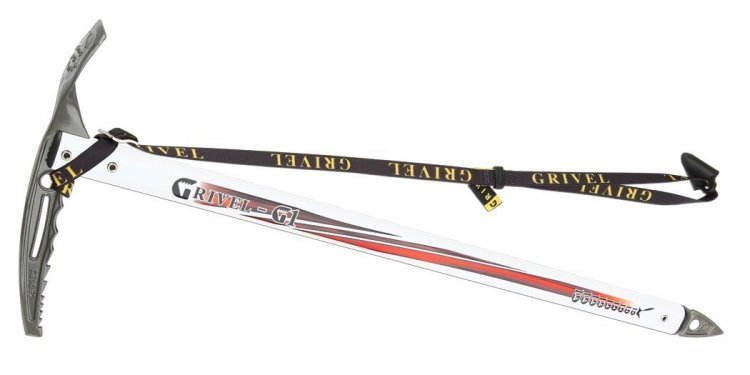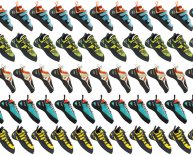
Ice climbing Axes
Alpinists, ski mountaineers, ice climbers, mixed climbers and high-country trekkers all need an ice axe for their mountain pursuits.
Choosing the best ice axe for you is based on your size and activity, plus a comparison of the length, weight, shape and CEN rating of the axe.
Below is our shopping guidance.
Important: Reading this article does not make you a mountaineer. Be sure to get competent ice-axe instruction and thoroughly practice using an ice axe before relying on one in the field.
To shop for an ice axe, you first need a basic understanding of its components.
Head: The head is comprised of the pick, adze and the carabiner hole and is usually made of a steel alloy. In tools specialized for steep ice and mixed rock-and-ice climbing, the adze is rarely used and can be replaced with a hammer. This weight savings can be a real plus.
Pick: This is the sharp end of the ice axe, used for hooking and swinging into snow or ice. It is also the part of the axe used during a self-arrest. A pick is described by its curvature angle and its clearance.
Adze: The broad, shovel-like adze is predominately used to cut steps or seats in snow or ice. It serves as a comfortable grip platform when holding the axe in a self-belay grasp (with the pick facing forward). This is the reverse position from the self-arrest grasp (when the adze is facing forward).
Carabiner hole: This hole in the head of an ice axe is used to affix an ice-axe leash or sometimes to clip a carabiner.
Shaft: These are made of aluminum, carbon fiber or steel. Each offers a tradeoff in terms of weight and strength. Heavier shafts are usually stronger, although lightweight materials such as carbon fiber are extremely strong (but much more expensive).
Some shafts are covered either partially or wholly in rubber to provide extra grip. Athletic tape can be used to create a grip on an axe or you can wear gloves with rubber palms to create extra friction.
Spike: The metal tip of an axe is the sharp point that penetrates snow and ice. It is mostly used to maintain balance while walking on snow or ice, much like a trekking pole. A few axes forgo having a spike (by cutting the shaft at an angle) to save weight. In many steep-ice and mixed climbing tools, the spike has been permanently removed. This shaves weight and increases safety when using the tool in a reverse stein-pull (using the tool upside-down as a lever on rock.)
Owing to their European heritage, ice axes are measured in centimeters. Each size reflects the distance from the tip of the axe to the top of the head. Typically axes are available in size increments of 5cm from 50cm to 75cm. The correct length is based on your size and your type of activity.
One popular way to find the correct length of an axe is simply to hold it while standing relaxed. The spike of the axe should barely touch the ground when you stand fully upright with your arms at your sides. Someone who is shorter (5'8" or so) might be able to use a 65cm axe for general mountaineering, whereas a taller person (say 6'2") might want a 75cm axe for the same task. It's also possible that 2 people of the same height might have a different reach and therefore need different lengths. A person's "ape index" is the difference between their overall height and wingspan (measured fingertip to fingertip.)
This also plays a large role in choosing the right length. Axes less than 60cm are often considered technical ice-climbing tools. Since these tools are shorter, they do not offer much leverage and are poorly designed for self arrest. Conversely, tools over 70cm are too long for technical snow or ice climbing but excel on lower-angle terrain. These longer axes are predominantly used for cross-country travel, scrambling, building snow anchors or probing for cornices and crevasses.
Caution: A too-long ice axe makes self-arrest difficult as the spike can catch in the snow and send you and your axe flying.
Finding a balance of the above 2 factors is usually best. If you plan on spending more time on lower-angle terrain (e.g., glacier travel, scrambling) go with a slightly longer ice axe. If you plan on spending more time on steeper terrain (e.g., couloirs, technical mountaineering) go with a slightly shorter axe. Or, bring a shorter ice axe for the steep stuff and use your trekking poles for low-angle travel.
The included chart can be used as a rough guide for choosing ice-axe length.
The old saying that "light is right" should not be taken too literally when choosing an axe. Lightweight aluminum ice axes are perfect choices for applications such as ski mountaineering, trekking and glacier travel since they help you save weight and increase speed. But lightweight axes tend to be less durable and less able to penetrate hard ice than heavier axes.
Alloys and stainless-steel axes are heavier, but they are more durable and thus better suited for general mountaineering, couloir climbing, ice and mixed climbing, and mountain rescue.
Understanding CEN Ratings
The CEN certification can help you choose the correct ice axe. CEN (Comité Européen de Normalisation) is a European group that develops and maintains equipment standards. On an ice axe, look for a circular CEN stamp that will have either a capital B or T in it.
Note: On technical ice tools, picks and shafts are rated separately. It is actually quite common to have a CEN-T shaft with a CEN-B pick. A CEN-B pick is thinner and more flexible, penetrating pure ice better; a CEN-T pick is thicker and stiffer and works better for mixed climbing.
Putting it all together by attribute:
A leash helps secure an ice axe to either your wrist or harness. It is invaluable in situations where losing your axe could mean losing the basic safety tool needed to get back down. It is considered mandatory by many mountaineers when crossing crevasses or climbing long, steep routes.
Many climbers choose to go leash-less in certain situations noting that leashes merely act as tethers to a sharp tool that could be hazardous during a fall. In addition, as climbing guide Michael Silitch notes this scenario: "When climbing up a big mountain slope, you'd have to pause (with a leashed ice axe) at each switchback to change wrists—an annoyance for the rope team and an impact to your efficiency."
















